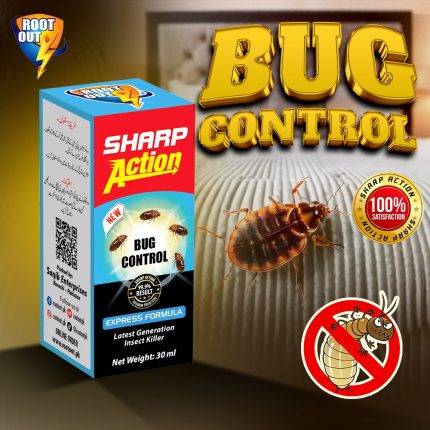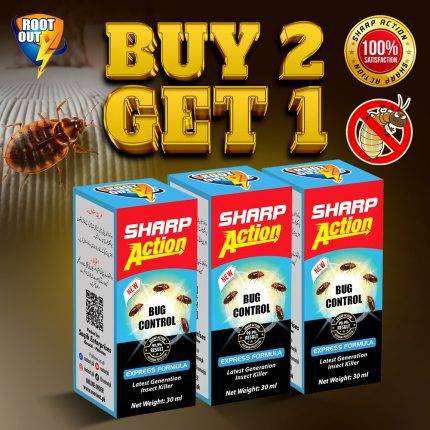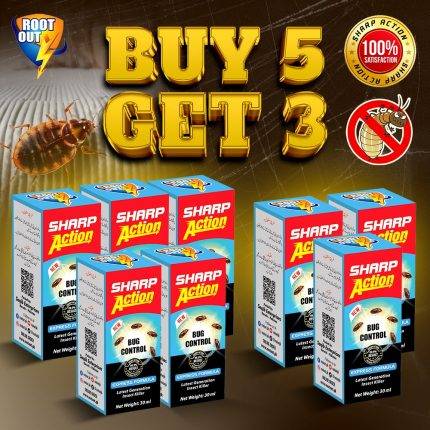Bed Bugs Control
Bed Bugs Control For Homes That Want Results
Finding bites on your skin or tiny rust colored marks on sheets is stressful. Bed bugs hide in seams, cracks, and joints, then multiply quickly. They travel between rooms and even between apartments, which is why small issues can escalate fast.
Effective bed bug control depends on proven products and a simple plan you can follow. A reliable bed bug killer reduces the current population, disrupts the life cycle from egg to adult, and helps prevent a rebound so you can sleep comfortably again
.A trusted solution matters because bed bugs are resilient. Quick tricks or light cleaning rarely solve the problem. You need products that reach what you can see and what you cannot.
When you choose a professional-grade bed bug killer or a targeted bed bug killer powder, you invest in results that last, not a temporary pause. The goal is clear. Restore comfort with a method that is safe, practical, and thorough.
What Is a Bed Bug Killer
A bed bug killer is any treatment designed to eliminate bed bugs and stop future activity. The most common options include ready-to-use sprays, residual formulations, dusts, and bed bug killer powder.
Contact sprays act fast on live insects and are ideal for mattresses, bed frames, and fabric seams. Residual products keep working after they dry, which helps control insects that were hidden during the first pass.
Dusts and powders settle into cracks, wall voids, baseboards, and electrical outlets where sprays may not reach easily, creating a long-lasting barrier. Traps and monitors do not replace treatment, yet they help confirm activity, guide placement, and measure progress over time.
How to Choose the Right Bed Bug Killer
Type of infestation
Begin with a basic evaluation. If you see fresh bites, live insects, or clusters around sleeping areas, use a fast-acting contact spray to reduce visible numbers. For heavy or stubborn activity, combine a contact spray with a residual product to keep pressure on any insects that emerge later.
Bed bug killer powder is a smart companion for hard-to-reach spaces such as floor gaps, furniture joints, and behind switch plates. This layered approach gives you speed and staying power at the same time.
Size of area
Treat the whole affected zone, not just the bed. A single room often needs two thorough passes that include the mattress, headboard, side tables, skirting, curtains, and closets. Larger homes or shared buildings require a more comprehensive plan and a broader range of products.
Look for options that offer clear coverage guidance and that continue working between visits, especially when neighbouring rooms may be a source of reintroduction. Always read the label for application rates so you apply enough product without waste.
Safe for pets or children
Safety comes first. Choose products meant for home use and follow directions closely. Keep people and pets out of treated rooms until surfaces are fully dry. Many families prefer low odour water-based sprays for open surfaces and bed bug killer powder for protected spaces where it will stay in place. Store products securely and wear simple protective gear as directed on the label.
Tips for Effective Bed Bug Treatment
- Verify the situation first. Inspect the joints in the bedframe and seams of your mattress. Look for live insects and small dark patches.
- Clear the area. Reduce clutter and bag loose items so you can inspect and clean them.
- Wash everything you can. Use a hot wash and a high heat dry for bedding and clothes. Heat kills every stage.
- Vacuum slowly and thoroughly. Do mattresses, box springs, baseboards, and furniture joints. Empty the vacuum outside right away.
- Treat what you can see. Apply a contact spray to visible insects and any high-activity spots. Follow the label closely.
- Create lasting protection. Add a residual spray or a bed bug killer powder into cracks, gaps, and wall voids for ongoing control.
- Go beyond the bed. Treat sofas, chairs, curtains, and the spaces behind frames and mirrors.
- Stay consistent. Repeat as directed and use traps or interceptors to watch progress between rounds.
- Related products you may need include an insect killer for general pests and crawling insects for ants and roaches.
Related Products
If you are dealing with other pests alongside bed bugs, explore our related categories.
- Insect killers provide broad-spectrum control for mosquitoes, flies, and similar nuisances so your rooms feel comfortable again.
- Crawling insect killers focus on ants, cockroaches, and other pests that move along floors and edges, helping you keep kitchens and living areas clean and calm.
Frequently Asked Questions
1 - How long does it take to get rid of bed bugs?
It depends on how bad the infestation is. If you keep treating minor problems, they may go away in a week or two. If you have a bigger problem, it may take several weeks of repeated treatments.
2 - Can I use a bed bug killer on my mattress?
Yes, but always check the product label. Many sprays are designed for safe use on mattresses, especially along seams and tufts. For powders, lightly dust hidden areas rather than sleeping surfaces.
3 - Are bed bug killers safe for pets and kids?
Some are, some aren’t. Always choose products labeled as pet and child-safe, and follow application guidelines so that you make the product safe for both during and after the application.






